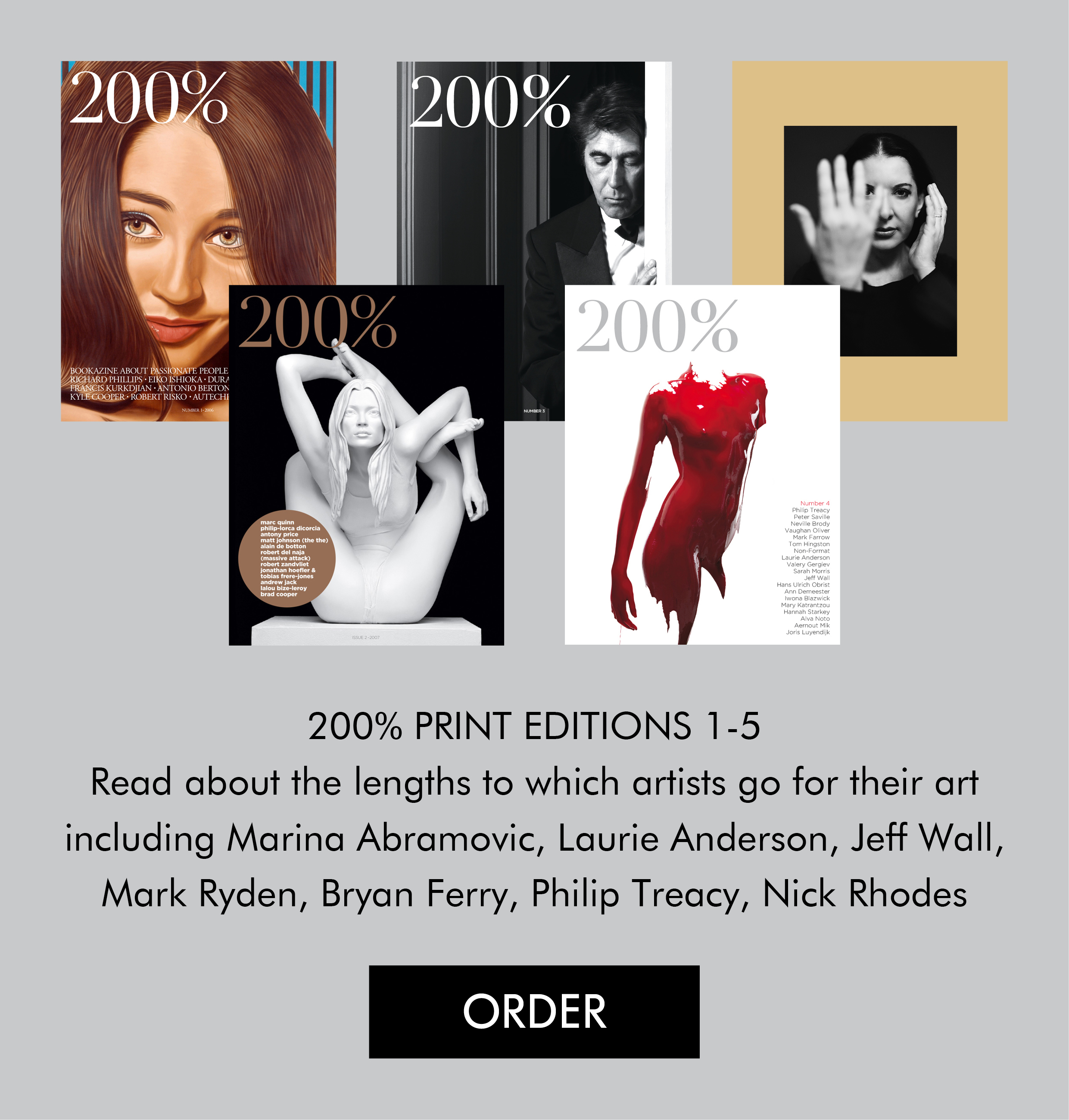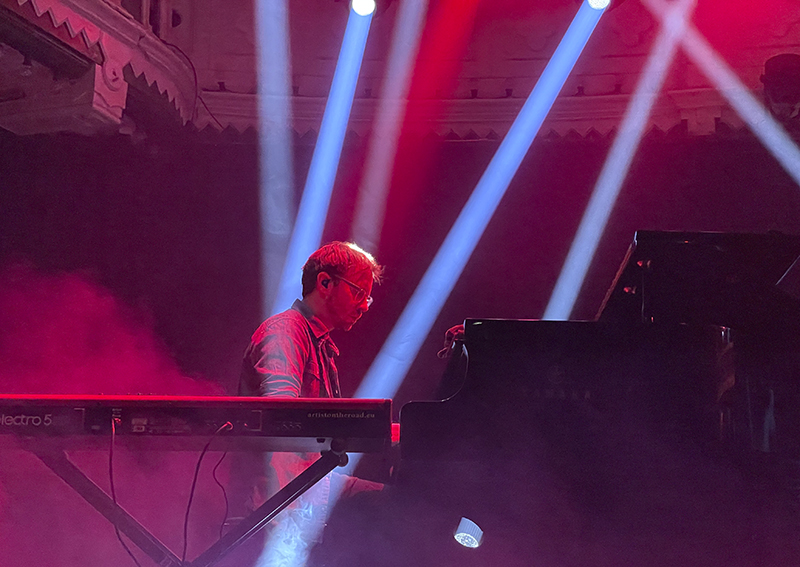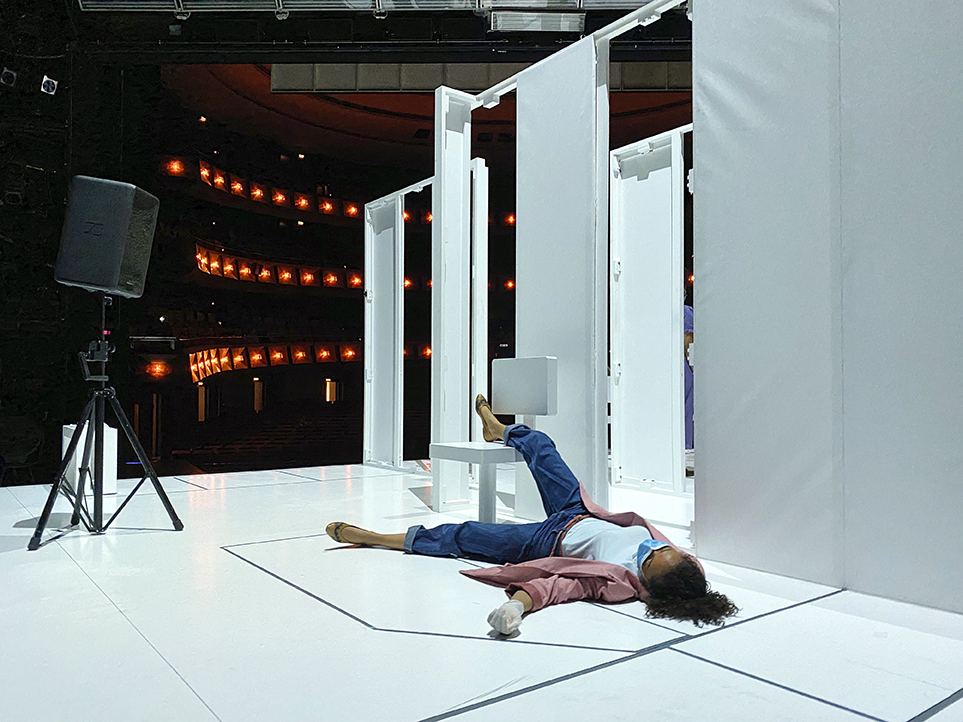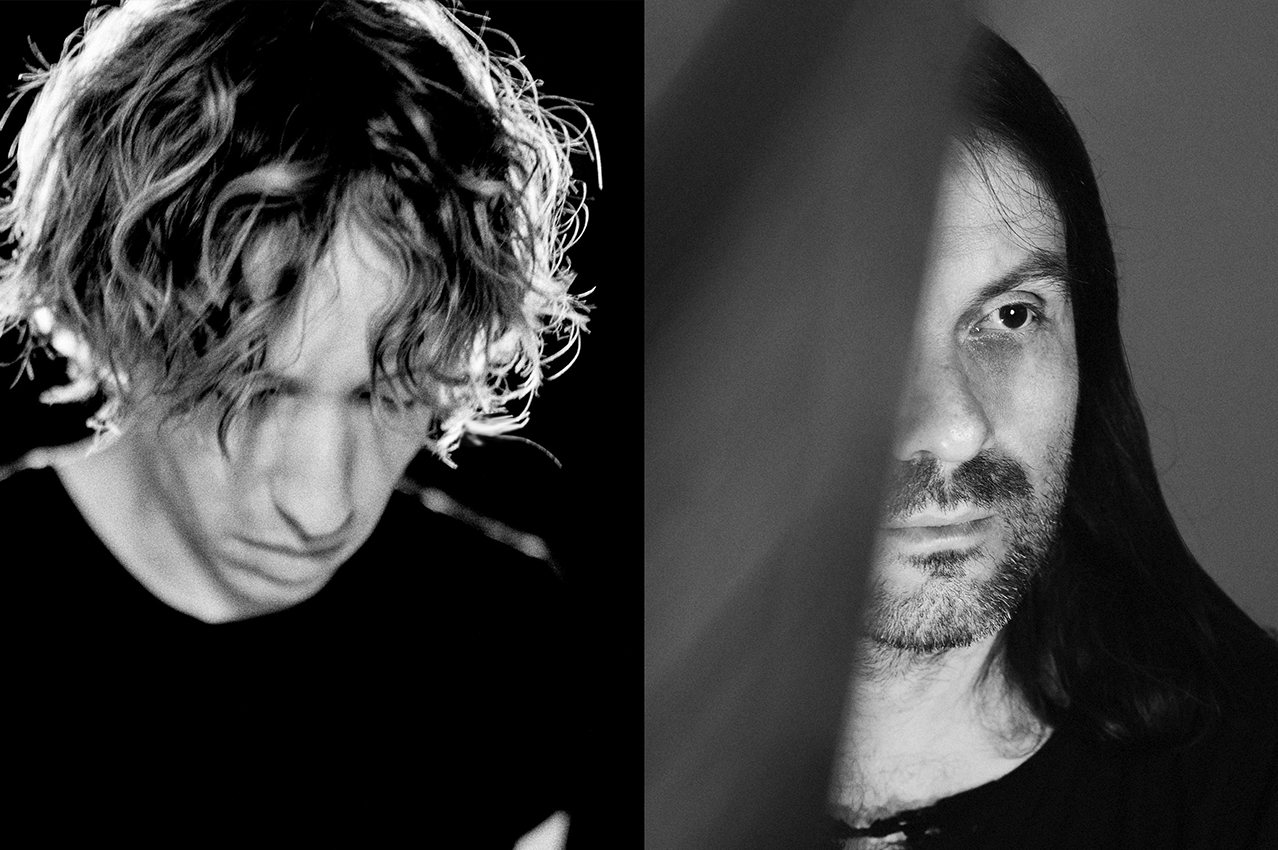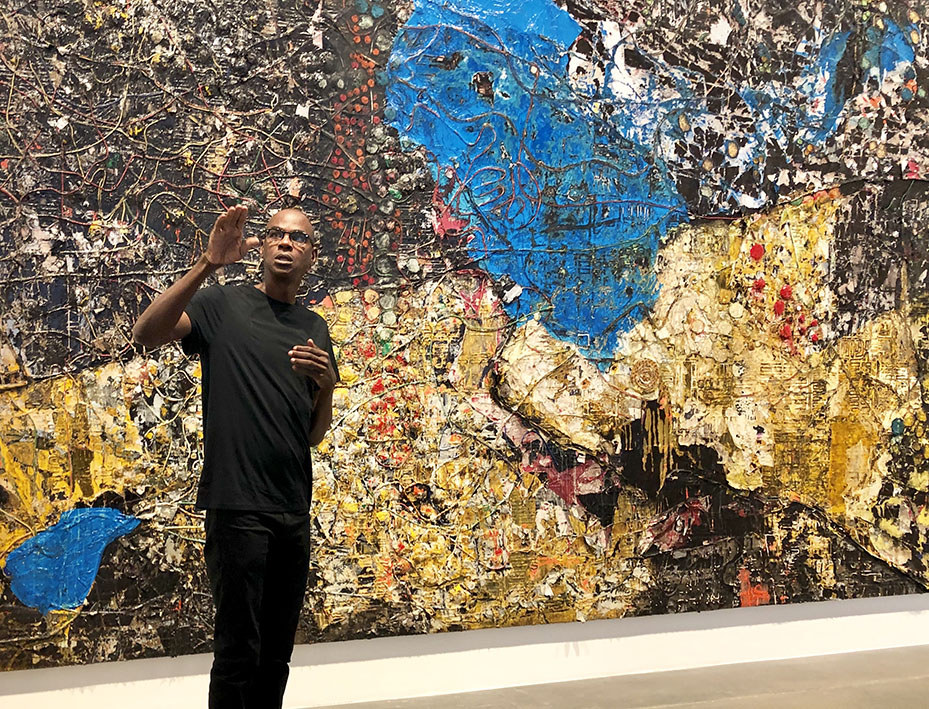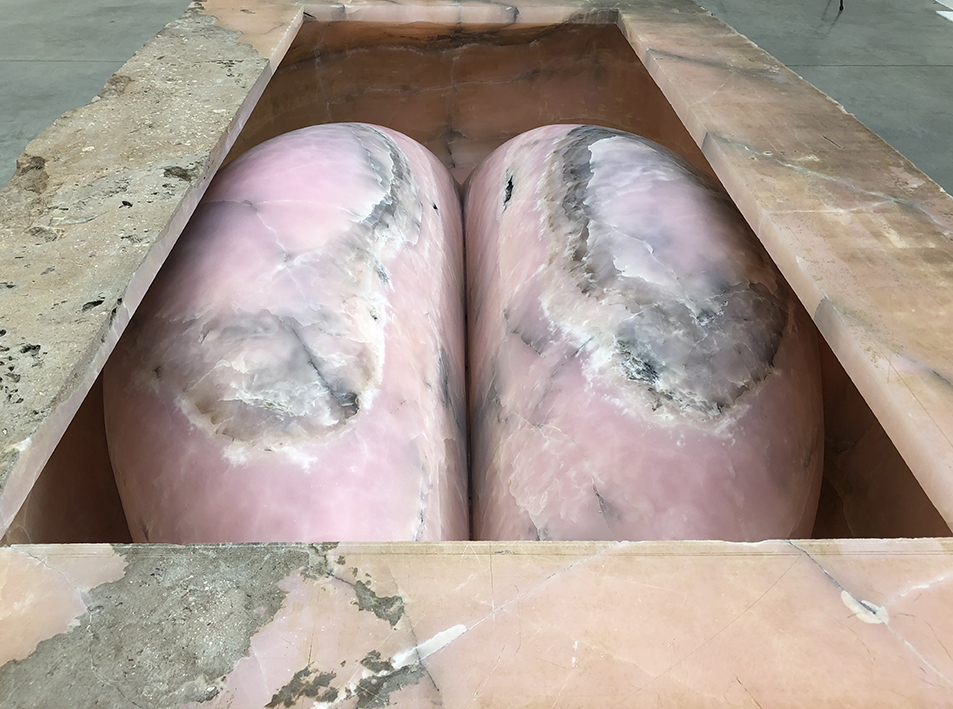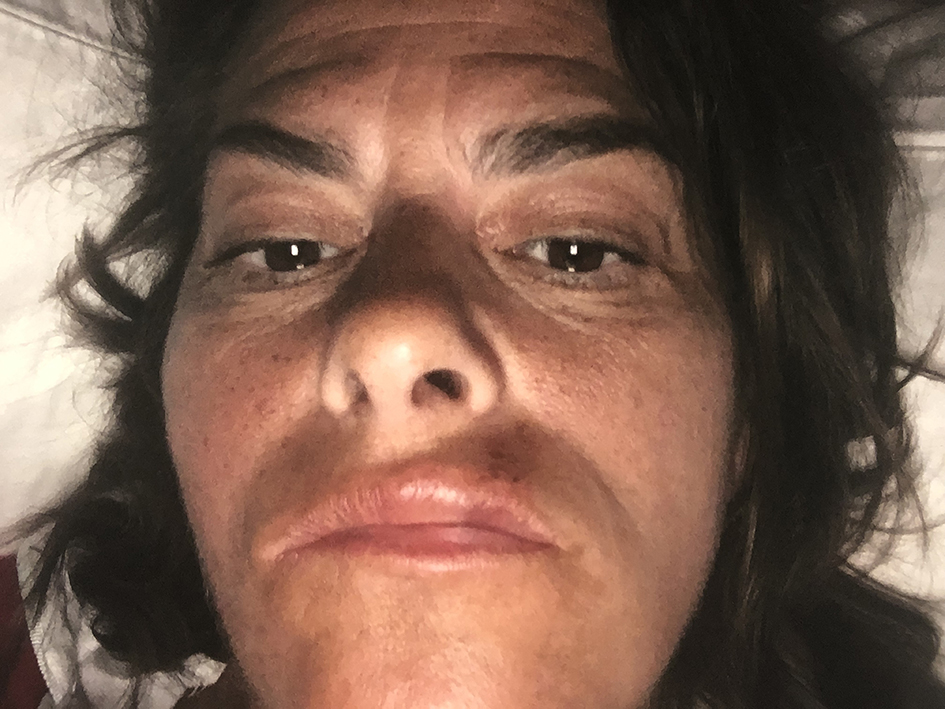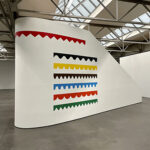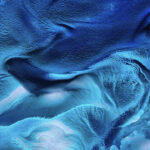 As great artists do, such us as the novelist Philip Roth and the musician Bob Dylan, the artist Gerhard Richter shows in his Tate Modern retrospective ‘Panorama’ that he has profound things to say about his life and the times in which he lives.
14 Rooms at the Tate are filled with Richter’s, still life, landscape and portrait paintings demonstrating his diversity and craftsmanship that induces awe. Although most of the figurative and abstract paintings, in this retrospective, are based on cerebral, conceptual ideas, the magic of painting is omnipresent as all of the paintings have something elusive.
Upon entering, the retrospective immediately opens with a ‘confrontational’ room on Germany’s Nazi past. It features a painting of a Nazi doctor ‘Mr Heyde’ and ‘Uncle Rudi’ a painting based on a personal family photograph of Richter’s uncle with a smirk on his face wearing a Wehrmacht uniform. Obviously, Richter didn’t close his eyes to the dark chapter of German’s history or to the involvement of his family members.
Another traumatic episode in German history is represented by Richter’s work ‘18 October 1977’. It’s a provocative series of grey coloured paintings based on photographs of the members of the radical activist Baader Meinhof Group. Titles of the paintings, such as ‘Cell’, ‘Dead’ and ‘Funeral’, set the tone for a dark subject matter wherein members of the group are depicted in their prison cells, with one showing hanging in a cell. Confronting, chilling and certainly gets under your skin.
As great artists do, such us as the novelist Philip Roth and the musician Bob Dylan, the artist Gerhard Richter shows in his Tate Modern retrospective ‘Panorama’ that he has profound things to say about his life and the times in which he lives.
14 Rooms at the Tate are filled with Richter’s, still life, landscape and portrait paintings demonstrating his diversity and craftsmanship that induces awe. Although most of the figurative and abstract paintings, in this retrospective, are based on cerebral, conceptual ideas, the magic of painting is omnipresent as all of the paintings have something elusive.
Upon entering, the retrospective immediately opens with a ‘confrontational’ room on Germany’s Nazi past. It features a painting of a Nazi doctor ‘Mr Heyde’ and ‘Uncle Rudi’ a painting based on a personal family photograph of Richter’s uncle with a smirk on his face wearing a Wehrmacht uniform. Obviously, Richter didn’t close his eyes to the dark chapter of German’s history or to the involvement of his family members.
Another traumatic episode in German history is represented by Richter’s work ‘18 October 1977’. It’s a provocative series of grey coloured paintings based on photographs of the members of the radical activist Baader Meinhof Group. Titles of the paintings, such as ‘Cell’, ‘Dead’ and ‘Funeral’, set the tone for a dark subject matter wherein members of the group are depicted in their prison cells, with one showing hanging in a cell. Confronting, chilling and certainly gets under your skin.
 Other rooms are dedicated to artists who have influenced Richter. ‘Art of Duchamp’ features a study of a toilet roll: this could be regarded as an homage, or a wink to Duchamp’s famous urinal. The room ‘Cage’ features paintings that are a reference to the composer John Cage. Richter was inspired by Cage’s method of music making, which is based on the classic Chinese text ‘I Ching’: a methodolgy of pinpointing order in chance events. Richter used Cage’s methodology and then applied it to producing a series of colourful, abstract paintings made by running a two meter squeegee across the canvas (In the poster of the exhibition we see the artist running the squeegee across a canvas). As Richter used the tool whilst the paint on the canvas was still wet, the paint started to blend in an unpredictable, irregular and wonderous way. Spontaneity, and chance were given free reign, thereby creating an unique series of paintings that can’t be re-produced again.
Other rooms are dedicated to artists who have influenced Richter. ‘Art of Duchamp’ features a study of a toilet roll: this could be regarded as an homage, or a wink to Duchamp’s famous urinal. The room ‘Cage’ features paintings that are a reference to the composer John Cage. Richter was inspired by Cage’s method of music making, which is based on the classic Chinese text ‘I Ching’: a methodolgy of pinpointing order in chance events. Richter used Cage’s methodology and then applied it to producing a series of colourful, abstract paintings made by running a two meter squeegee across the canvas (In the poster of the exhibition we see the artist running the squeegee across a canvas). As Richter used the tool whilst the paint on the canvas was still wet, the paint started to blend in an unpredictable, irregular and wonderous way. Spontaneity, and chance were given free reign, thereby creating an unique series of paintings that can’t be re-produced again.
 In some of his photorealistic works Richter also used wet paint for narrative reasons. In the painting Mr Heyde, based on an image of the Nazi doctor’s re-arrest, Richter trailed a dry brush across the still wet paint on the canvas, which produce a blurred effect and movement conveying the chaotic situation akin to someone’s arrest.
Other photorealistic works, such as ‘Reader’, are painted in a Johannes Vermeer-esque fashion, whilst others are painted in a ‘vague manner’, again for narrative reasons. The members of the Baader Meinhof group are painted out of focus as if the paintings are based on the only documentation that was found of them. It gives ‘18 October 1977’ a grim, raw and realistic documentary effect.
In the exhibition leaflet about ‘18 October 1977’ it is written: “It has also been argued that Richter wanted to challenge the presumption that painting was incapable of addressing traumatic history”. Richter aptly demonstrates that painting is capable of doing exactly that as it puts the audience in ‘Room 9’ in a reflective mood, with everyone being as silent as though they were attending a funeral. The painter has not only profound things to say on nasty, grim periods of German history but shows, in this retrospective, on the medium of painting as well.
Written by Thierry Somers
Paintings: Gerhard Richter, Reader, 1994, 72 x 120 cm (top), Gerhard Richter, Cage, 2006, 300 x 300 cm (middle), Gerhard Richter, Mr Heyde, 1965, 55 x 65 cm (below)
Gerhard Richter, ‘Panorama’, until 8 January 2012, Tate Modern.
In some of his photorealistic works Richter also used wet paint for narrative reasons. In the painting Mr Heyde, based on an image of the Nazi doctor’s re-arrest, Richter trailed a dry brush across the still wet paint on the canvas, which produce a blurred effect and movement conveying the chaotic situation akin to someone’s arrest.
Other photorealistic works, such as ‘Reader’, are painted in a Johannes Vermeer-esque fashion, whilst others are painted in a ‘vague manner’, again for narrative reasons. The members of the Baader Meinhof group are painted out of focus as if the paintings are based on the only documentation that was found of them. It gives ‘18 October 1977’ a grim, raw and realistic documentary effect.
In the exhibition leaflet about ‘18 October 1977’ it is written: “It has also been argued that Richter wanted to challenge the presumption that painting was incapable of addressing traumatic history”. Richter aptly demonstrates that painting is capable of doing exactly that as it puts the audience in ‘Room 9’ in a reflective mood, with everyone being as silent as though they were attending a funeral. The painter has not only profound things to say on nasty, grim periods of German history but shows, in this retrospective, on the medium of painting as well.
Written by Thierry Somers
Paintings: Gerhard Richter, Reader, 1994, 72 x 120 cm (top), Gerhard Richter, Cage, 2006, 300 x 300 cm (middle), Gerhard Richter, Mr Heyde, 1965, 55 x 65 cm (below)
Gerhard Richter, ‘Panorama’, until 8 January 2012, Tate Modern.

